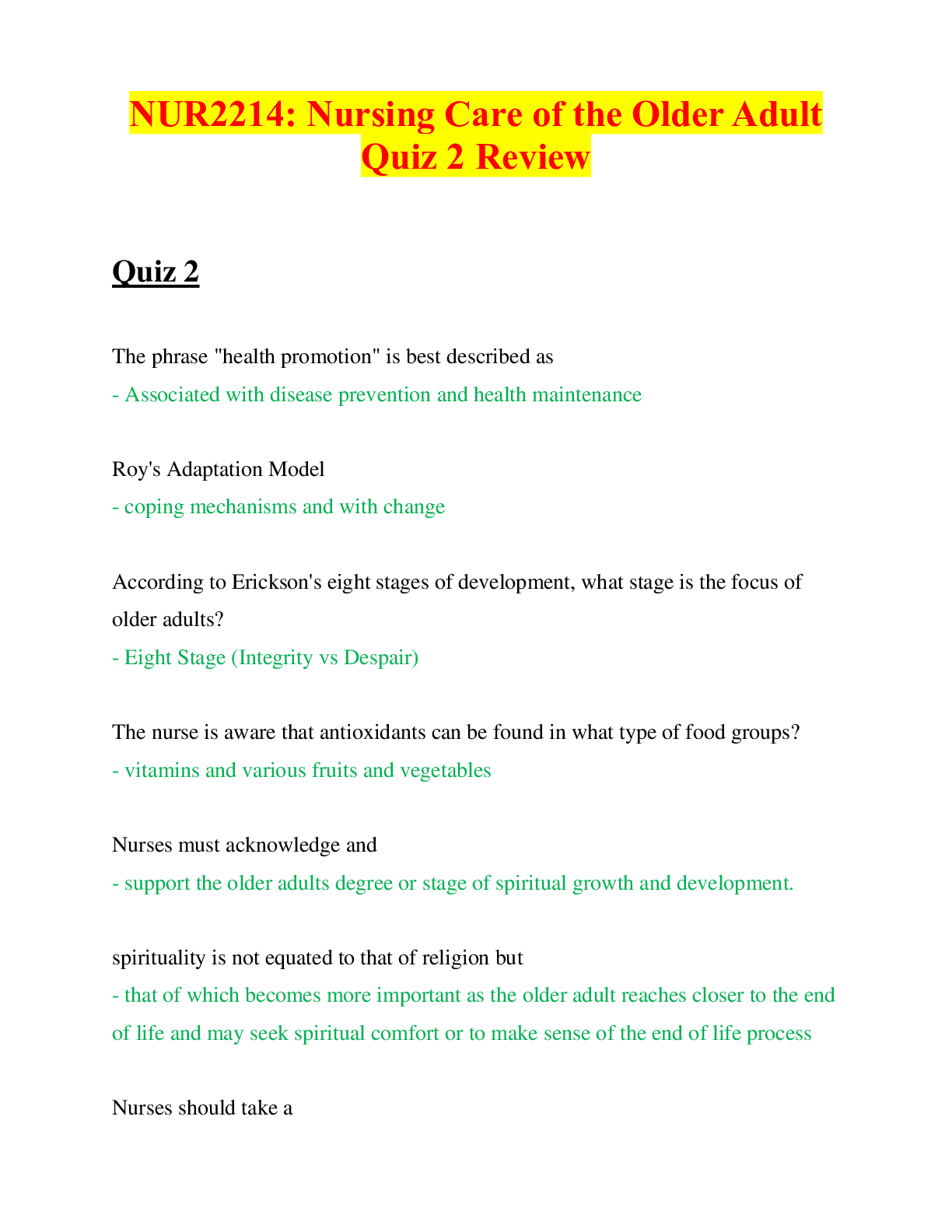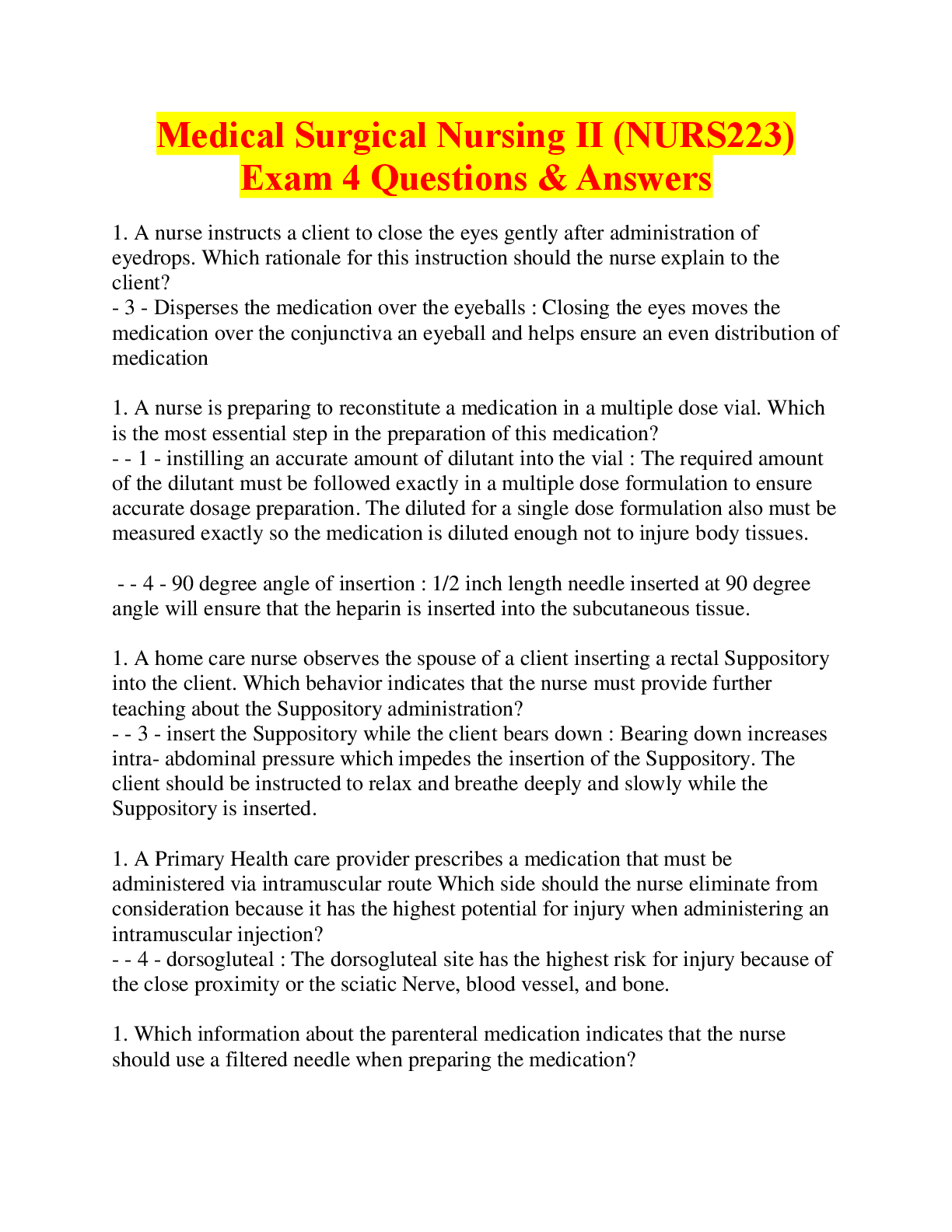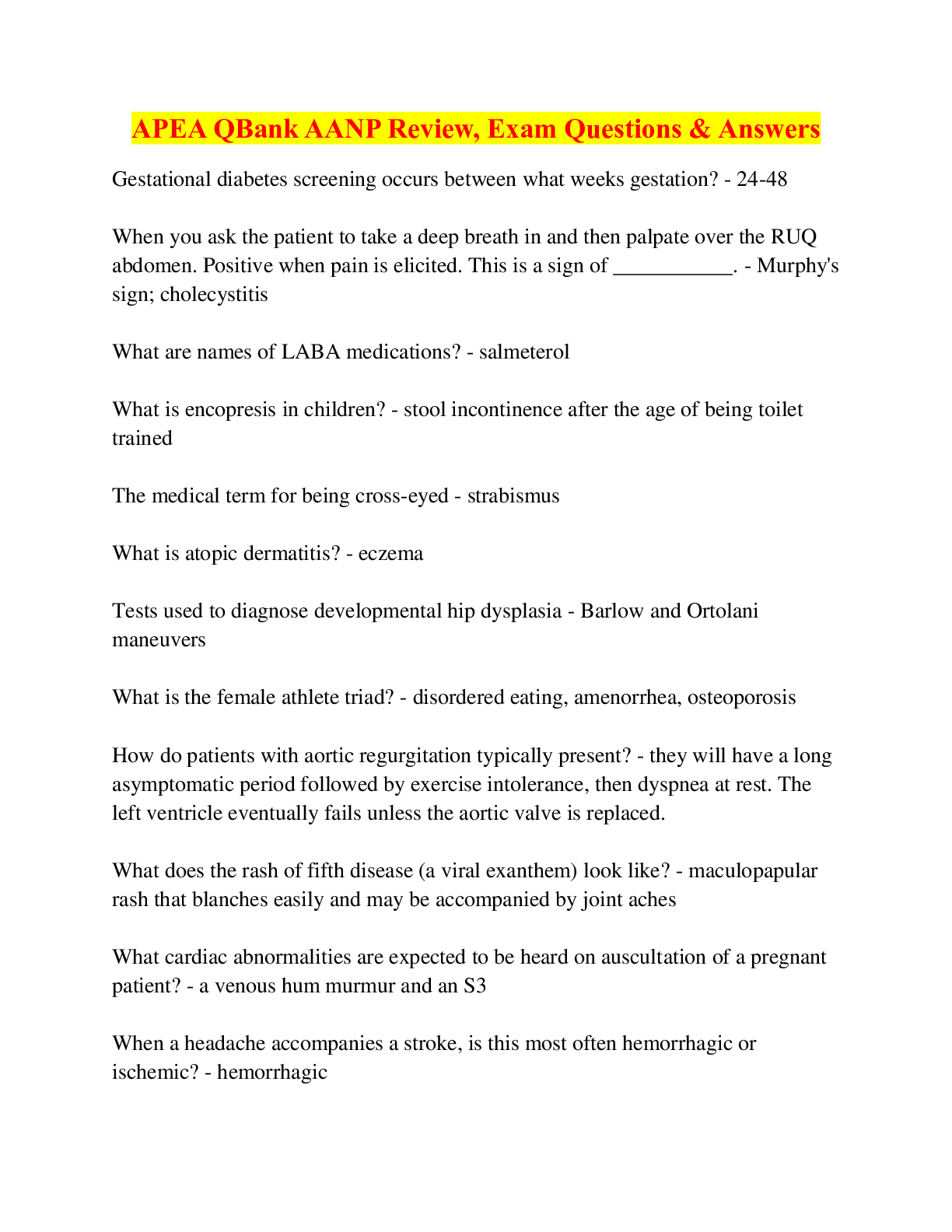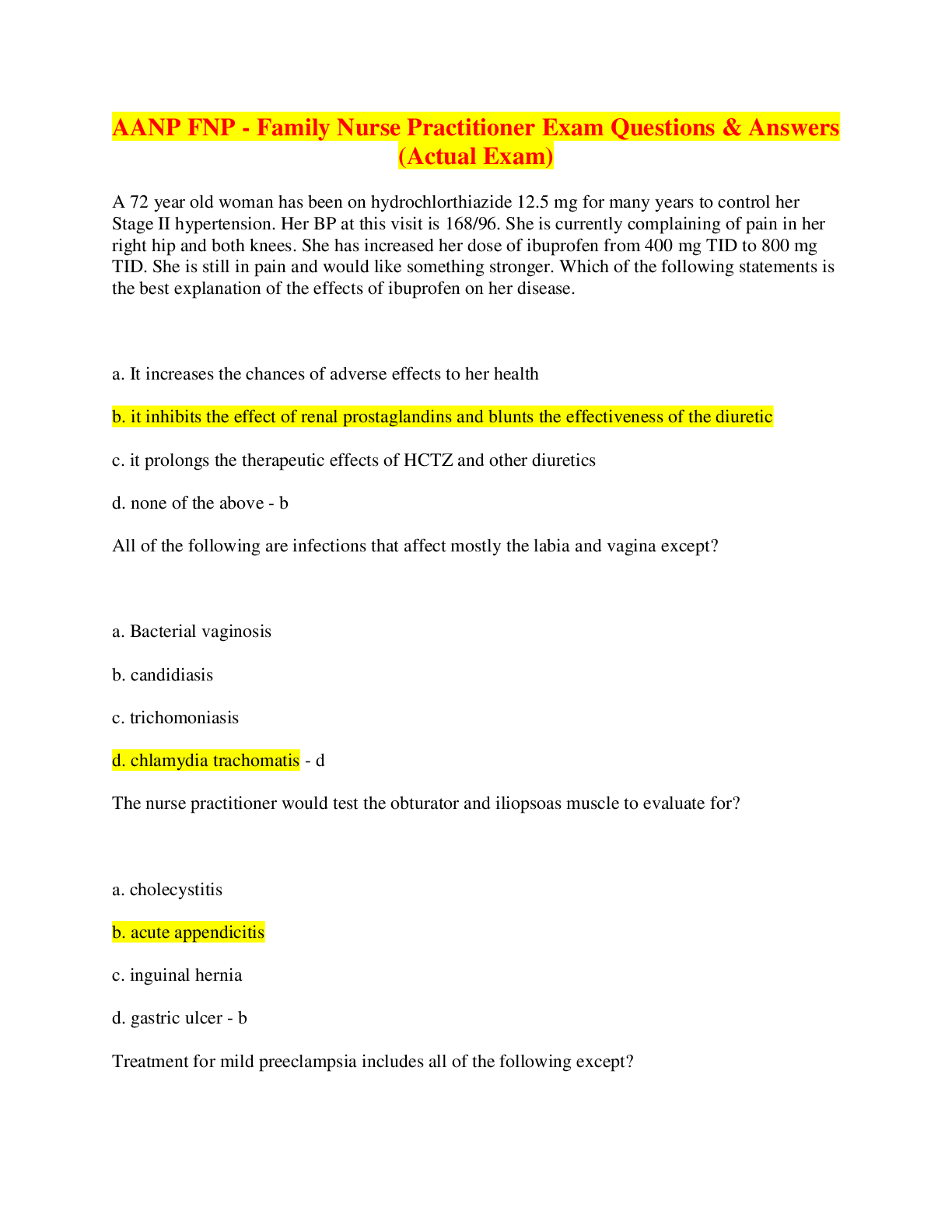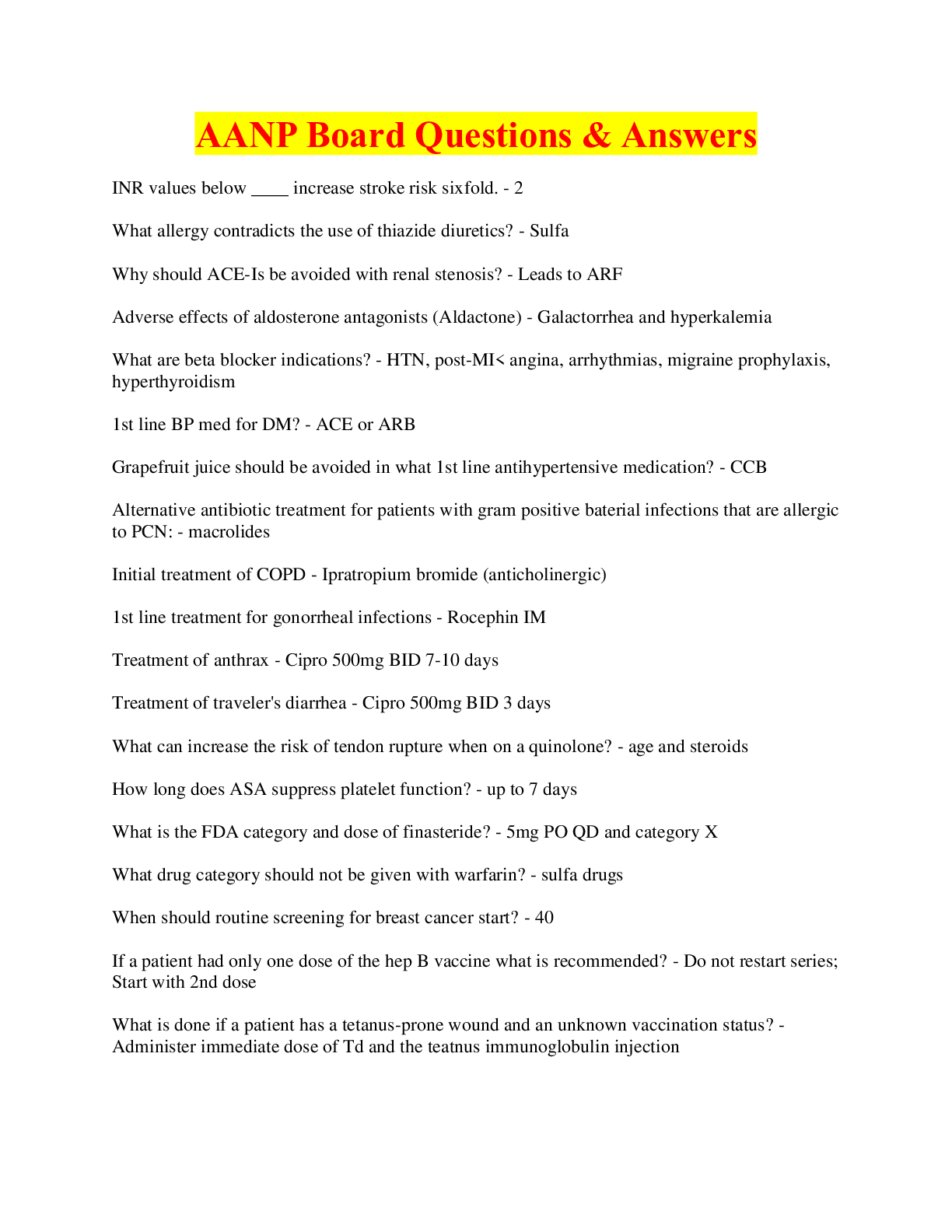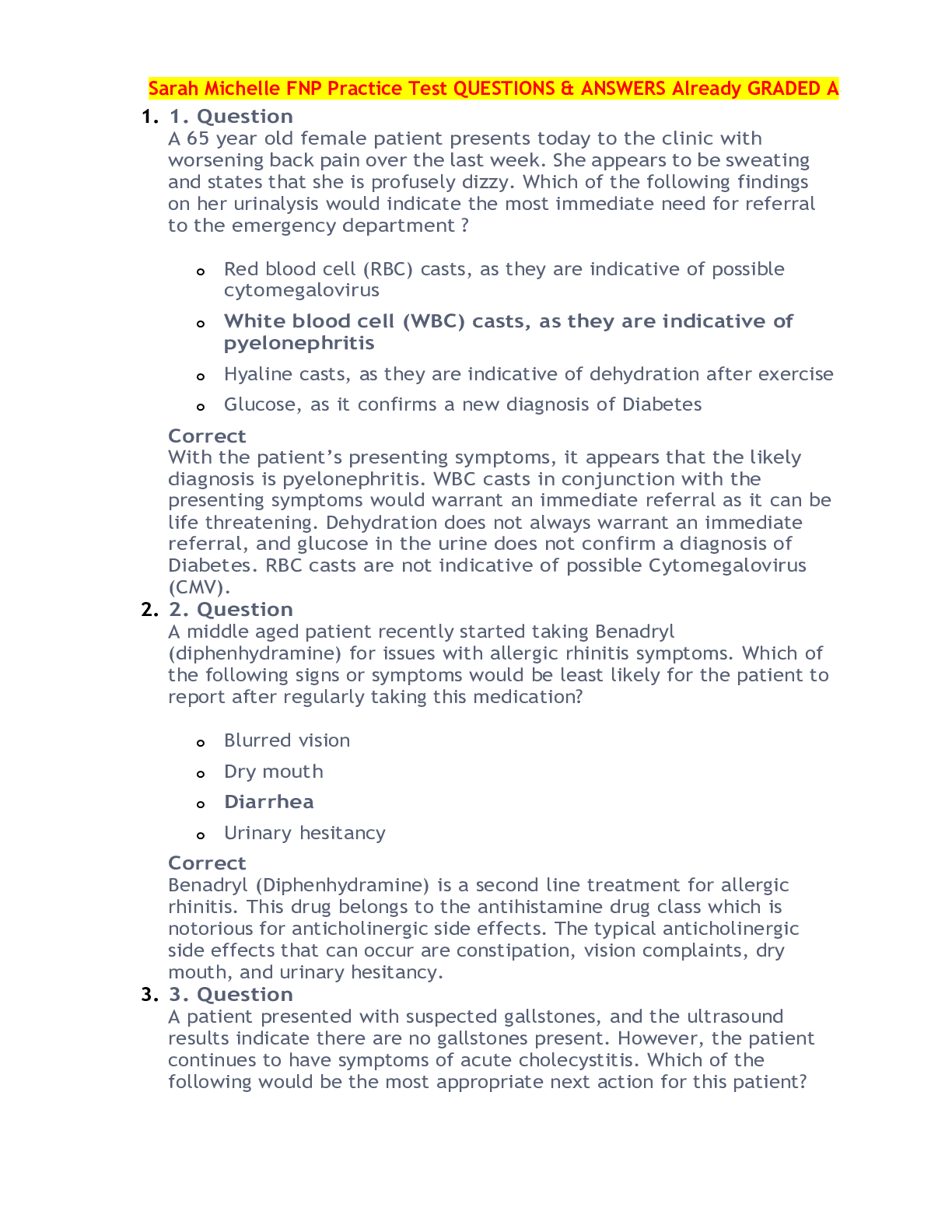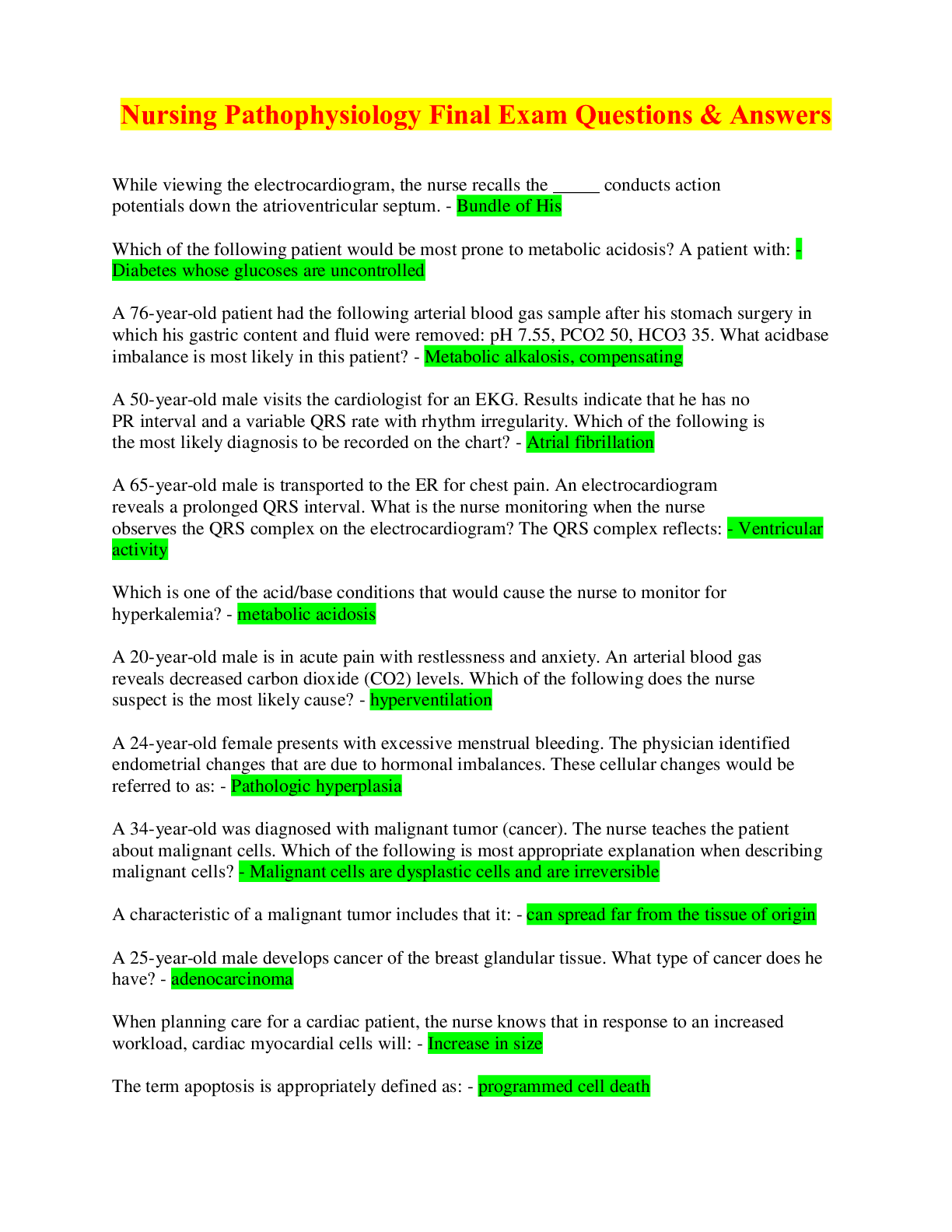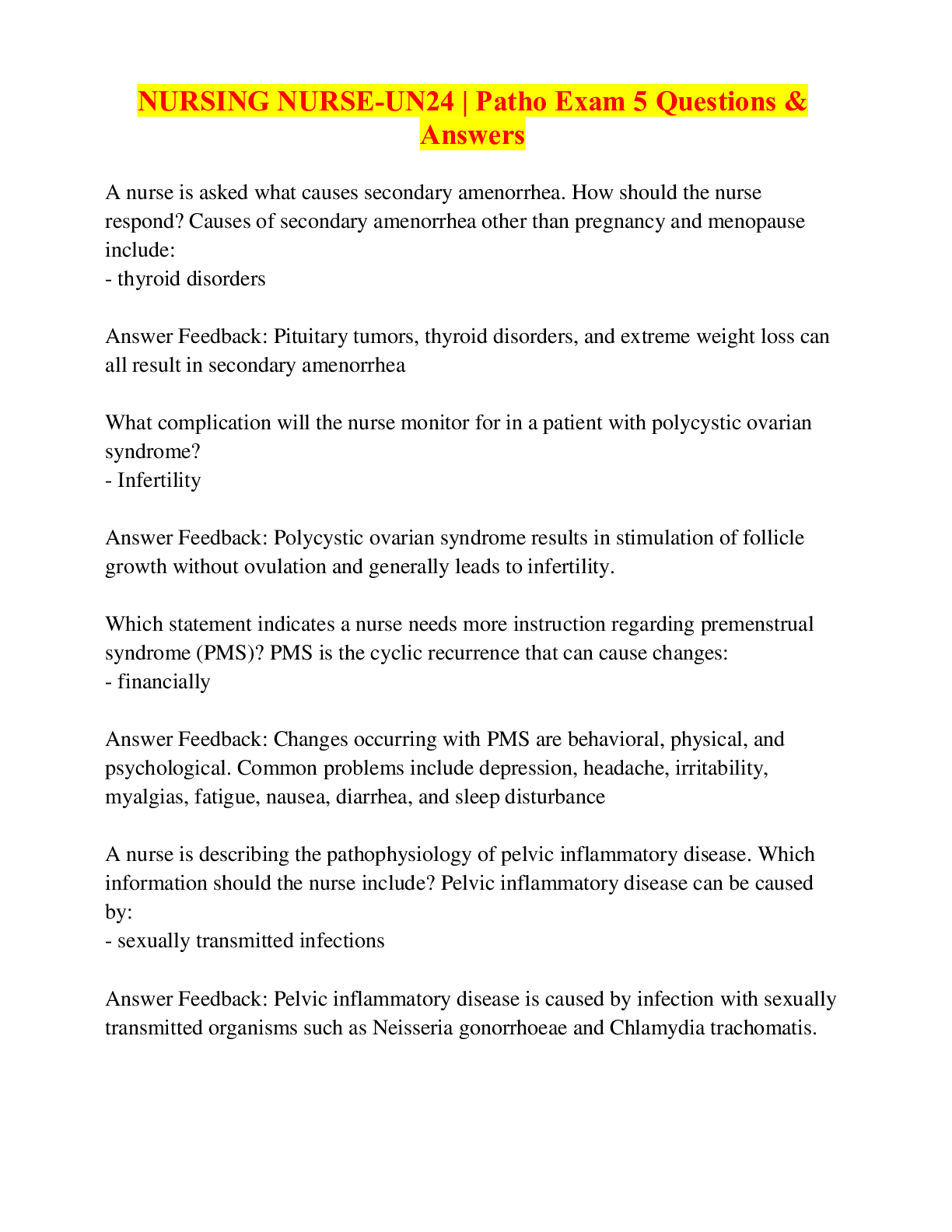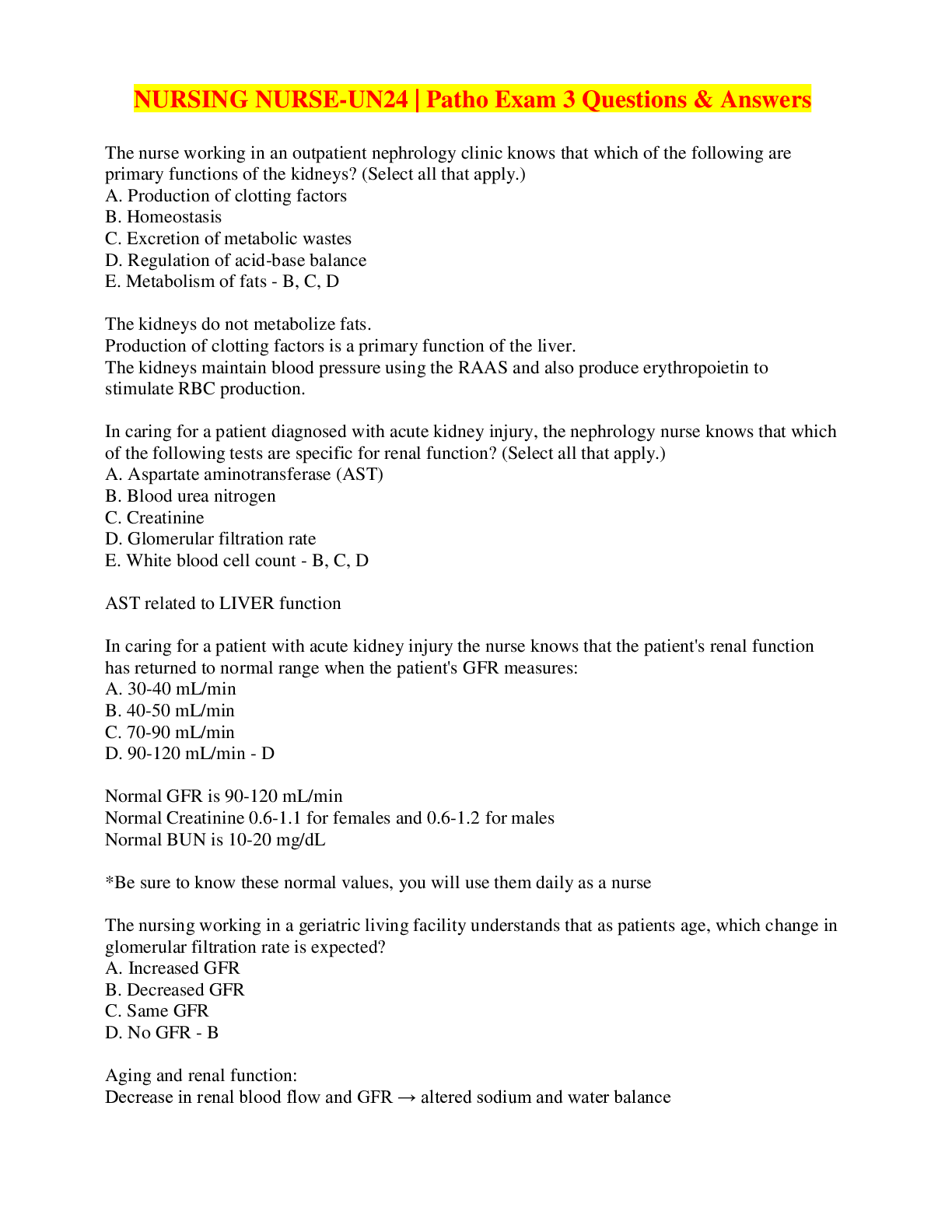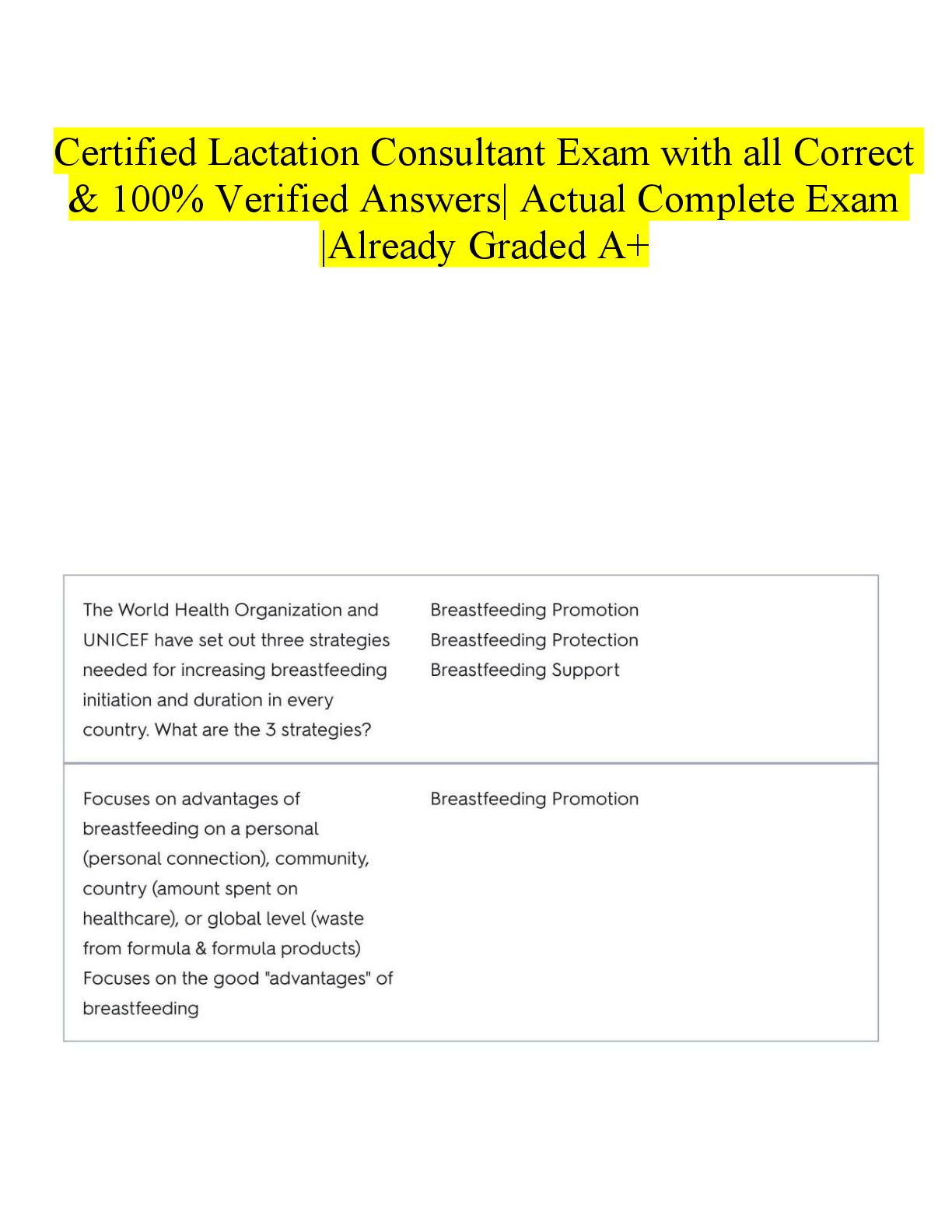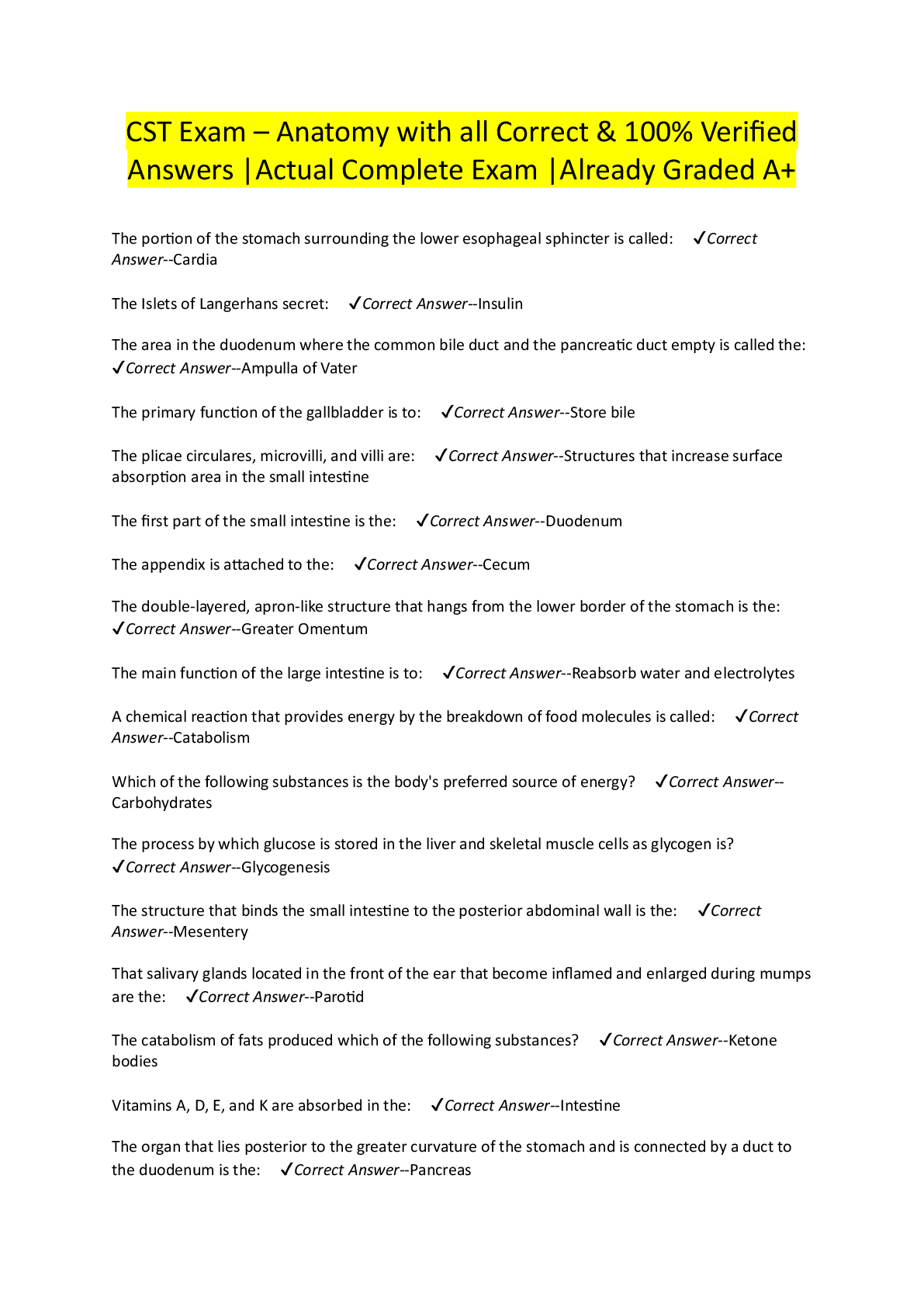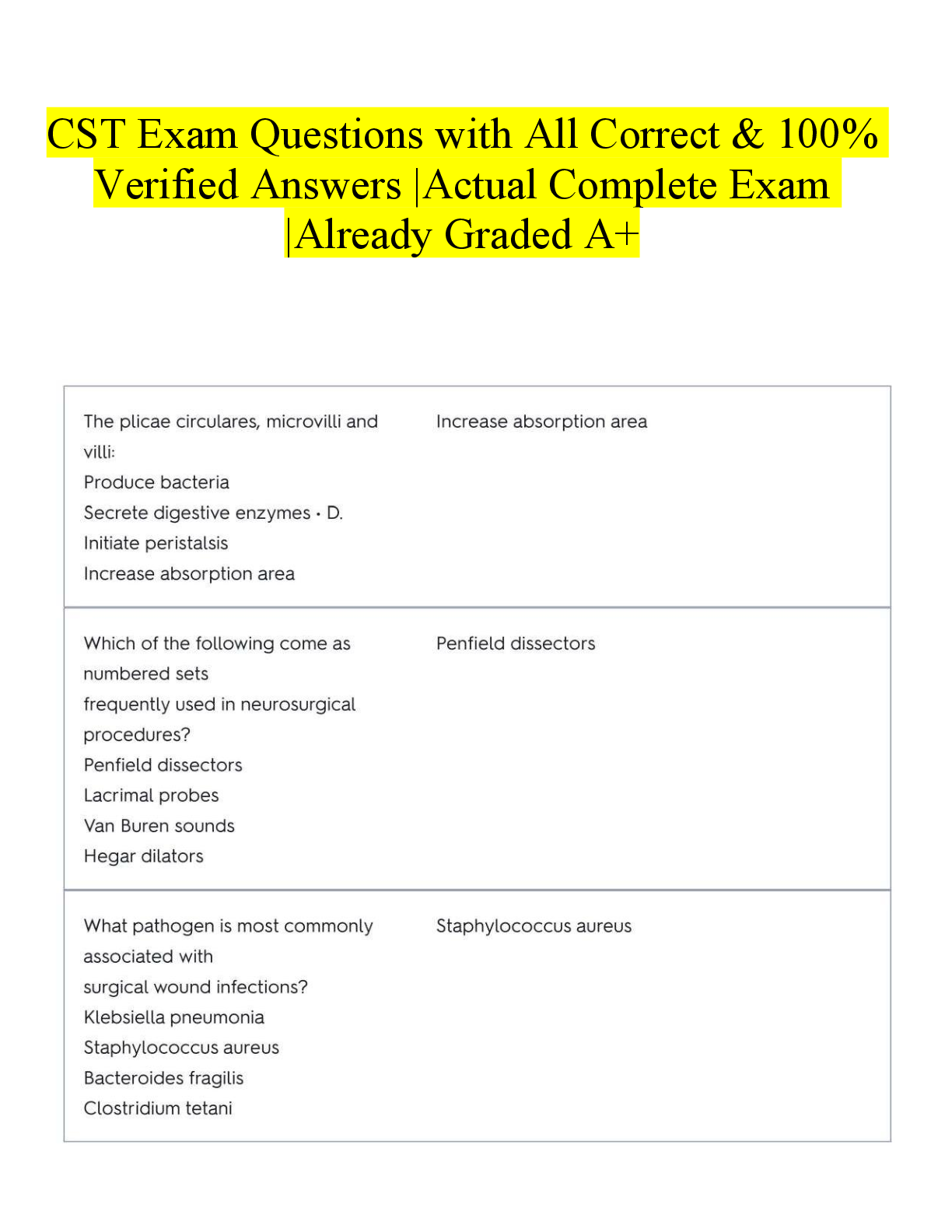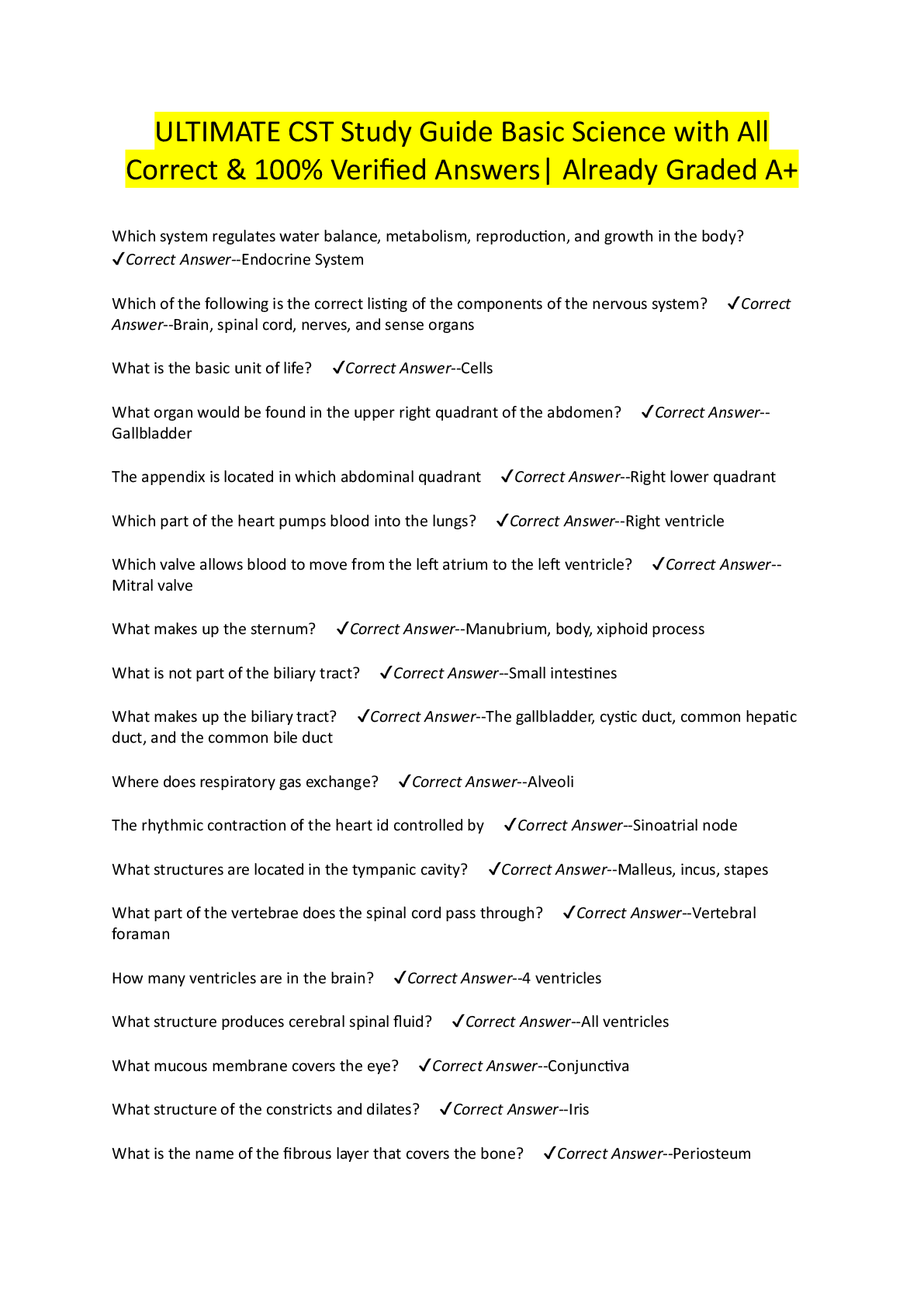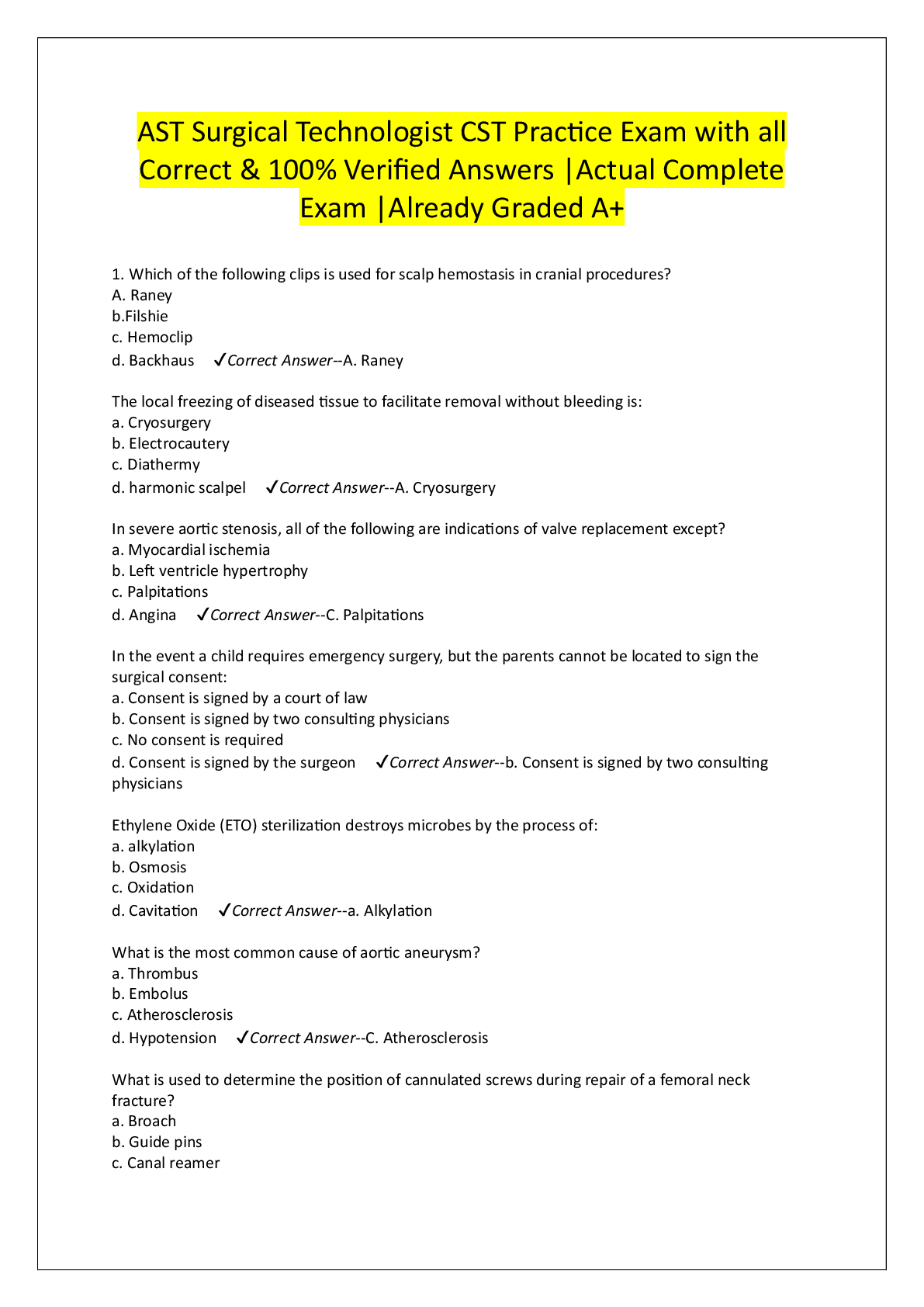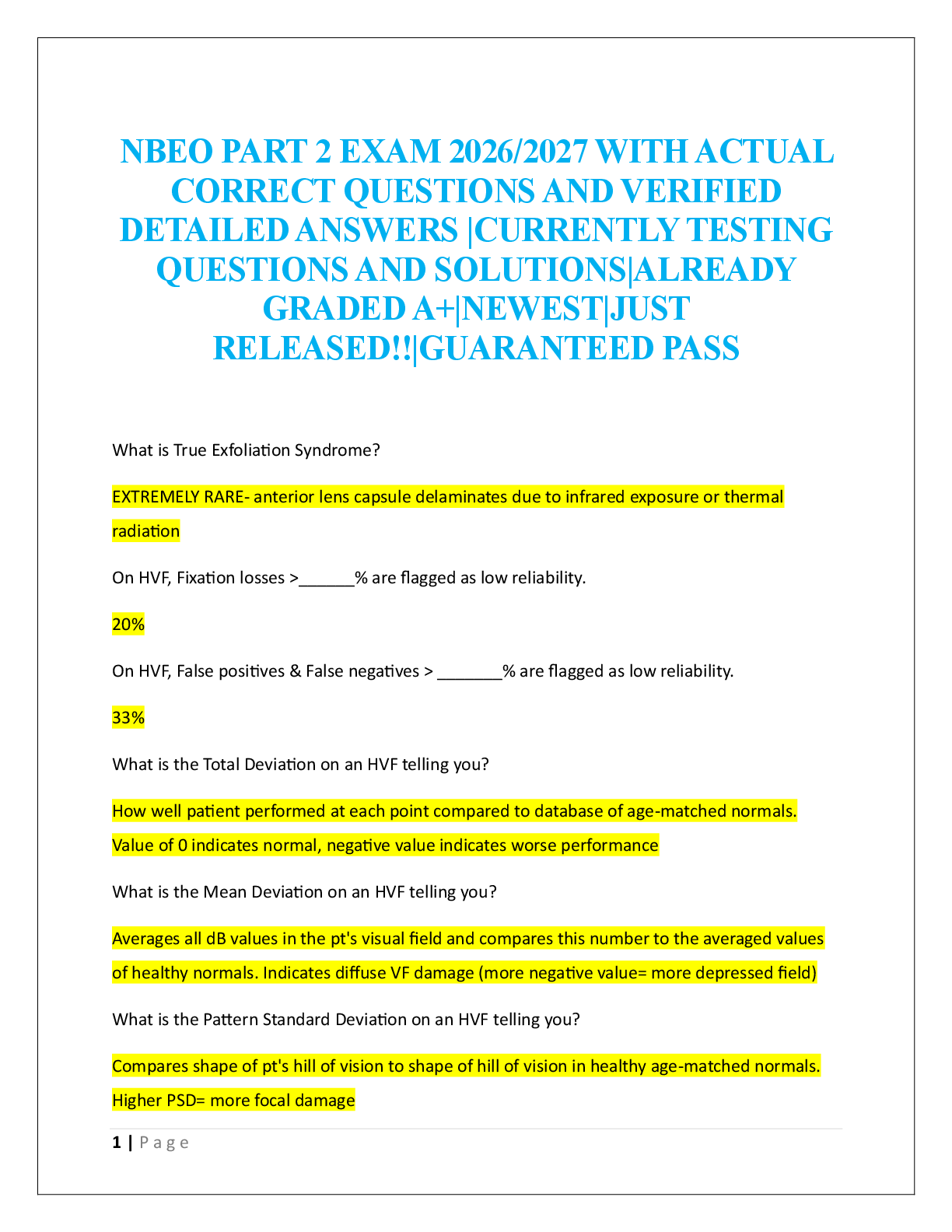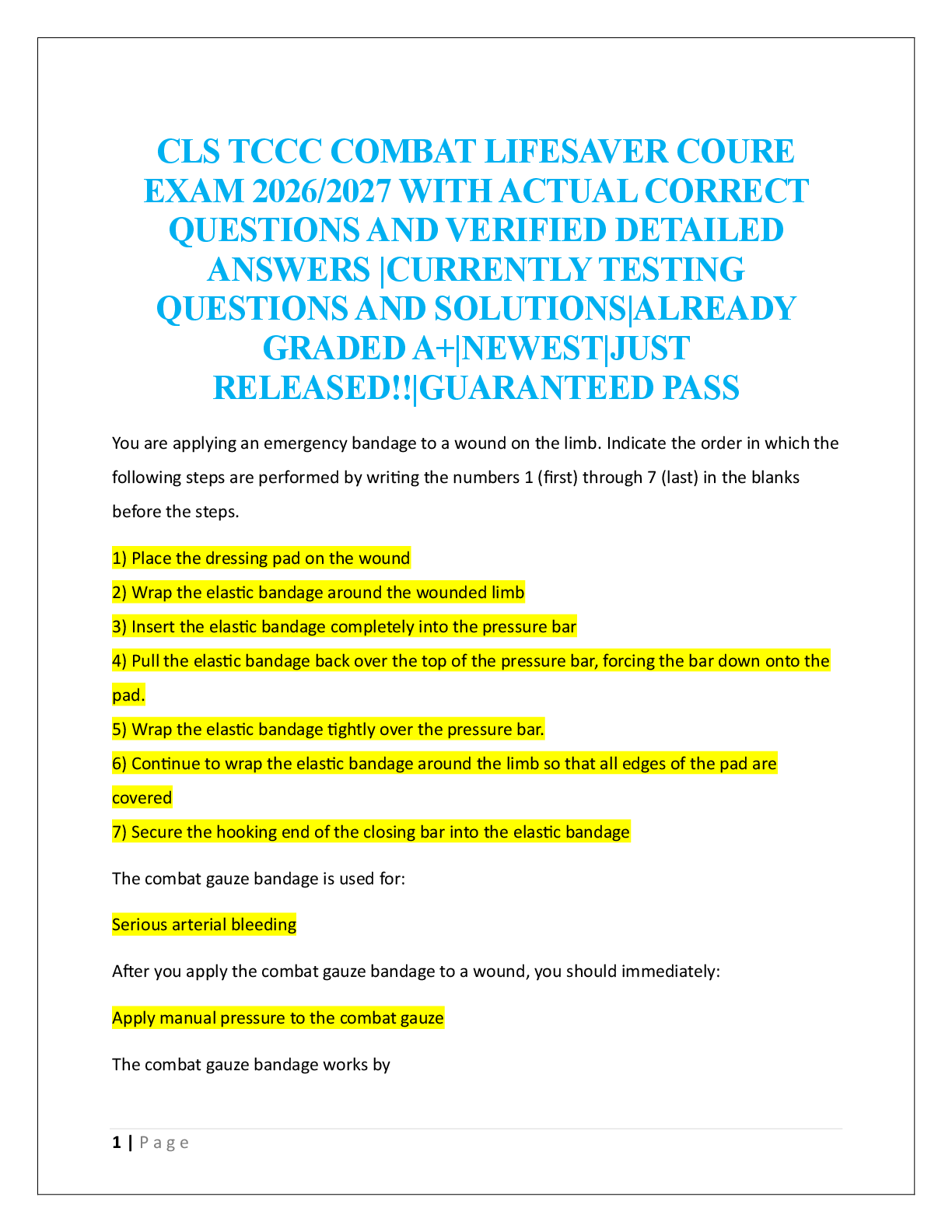*NURSING > EXAM > Advanced Trauma Life Support (ATLS) Test Exam 1 Questions & Answers, Graded 100% (All)
Advanced Trauma Life Support (ATLS) Test Exam 1 Questions & Answers, Graded 100%
Document Content and Description Below
Advanced Trauma Life Support (ATLS) Test Exam 1 Questions & Answers, Graded 100%-A 22-year-old man is hypotensive and tachycardic after a shotgun wound to the left shoulder. His blood pressure is init ... ially 80/40 mm Hg. After initial fluid resuscitation his blood pressure increases to 122/84 mm Hg. His heart rate is now 100 beats per minute and his respiratory rate is 28 breaths per minute. A tube thoracostomy is performed for decreased left chest breath sounds with the return of a small amount of blood and no air leak. After chest tube insertion, the most appropriate next step is: Select one: a. reexamine the chest b. perform an aortogram c. obtain a CT scan of the chest d. obtain arterial blood gas analyses e. perform transesophageal echocardiography - A) Reexamine the chest A construction worker falls two stories from a building and sustains bilateral calcaneal fractures. In the emergency department, he is alert, vital signs are normal, and he is complaining of severe pain in both heels and his lower back. Lower extremity pulses are strong and there is no other deformity. The suspected diagnosis is most likely to be confirmed by: Select one: a. angiography b. compartment pressures c. retrograde urethrogram d. Doppler ultrasound studies e. complete spine x-ray series - e) Complete spine x-ray series Which of the following is true regarding the initial resuscitation of a trauma patient? Select one: a. A patient that presents with a torso gunshot wound and is hypotensive should receive crystalloid fluid resuscitation until the blood pressure is normal b. Evidence of improved perfusion after fluid resuscitation could include improvement in Glasgow coma scale score on reevaluation c. Massive transfusion is defined as transfusion of more than >10 of packed red blood cells and plasma in 24 hours d. When tranexamic acid is administered by pre-hospital providers a second dose is required within 24 hours e. Fluid resuscitation is far more important than bleeding control in trauma patients - b. Evidence of improved perfusion after fluid resuscitation could include improvement in Glasgow coma scale score on reevaluation In managing a patient with a severe traumatic brain injury, the most important initial step is to: Select one: a. Secure the airway b. obtain a c-spine film c. support the circulation d. control scalp hemorrhage e. determine the GCS score Feedback Your answer is corr - a. Secure the airway [Show More]
Last updated: 9 months ago
Preview 5 out of 21 pages

Loading document previews ...
Buy this document to get the full access instantly
Instant Download Access after purchase
Buy NowInstant download
We Accept:

Also available in bundle (1)
Click Below to Access Bundle(s)
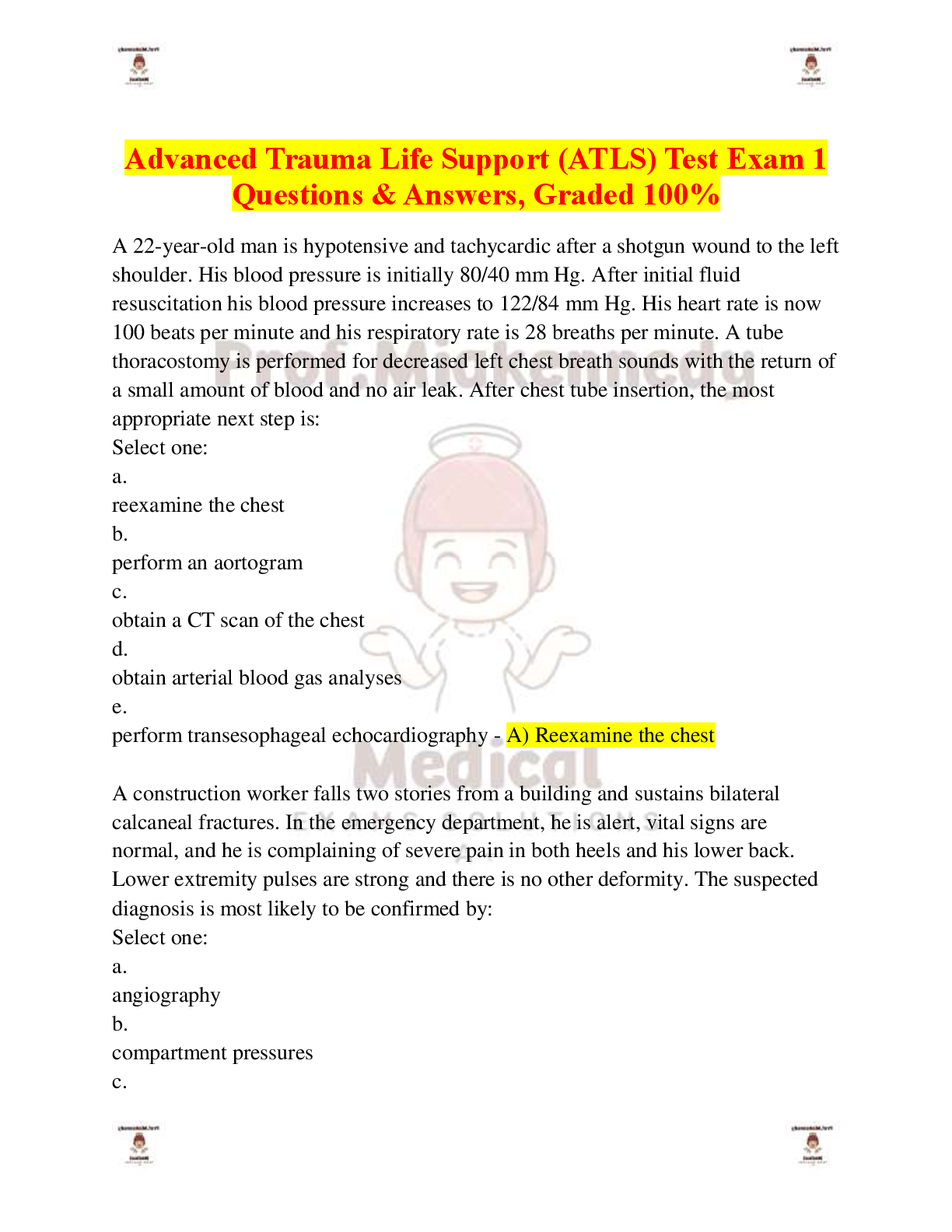
BUNDLE: Advanced Trauma Life Support (ATLS) Exam 1, Exam 2, FINAL EXAM& Exam Review Questions & Answers, Graded 100% ( FROM ACTUAL TESTS)
BUNDLE: Advanced Trauma Life Support (ATLS) Exam 1, Exam 2, FINAL EXAM& Exam Review Questions & Answers, Graded 100% ( FROM ACTUAL TESTS)
By PROF 9 months ago
$29.5
4
Reviews( 0 )
$14.50
Can't find what you want? Try our AI powered Search
Document information
Connected school, study & course
About the document
Uploaded On
Feb 24, 2025
Number of pages
21
Written in
All
Additional information
This document has been written for:
Uploaded
Feb 24, 2025
Downloads
0
Views
42

